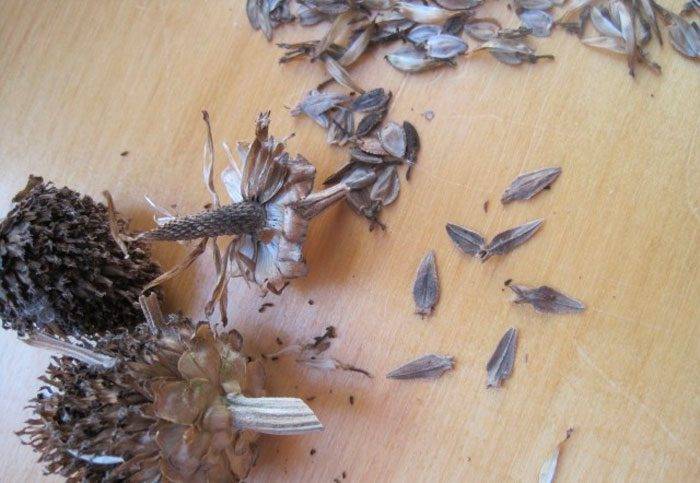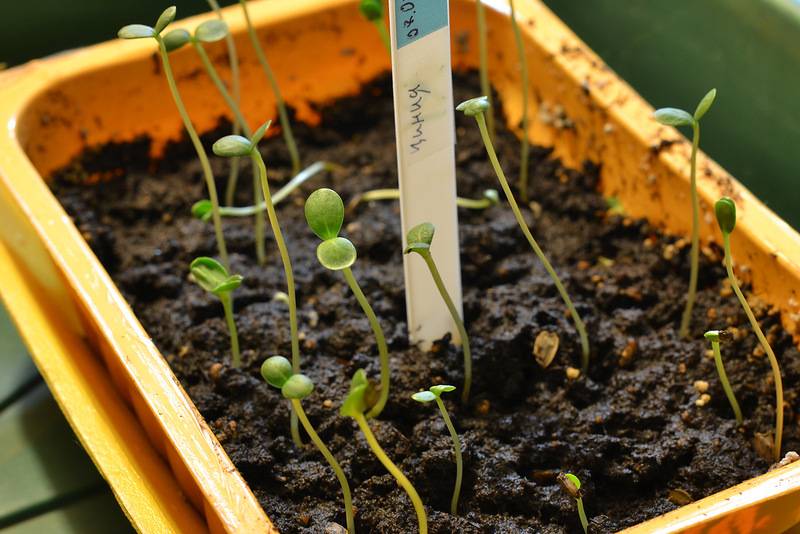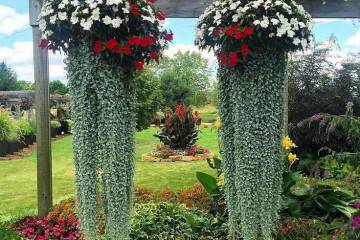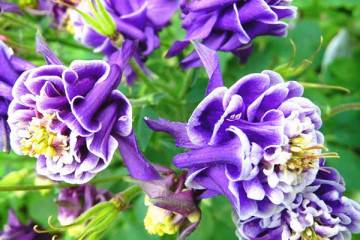Zinnia - growing from seeds at home
Zinnia is one of the ten most demanded flowers suitable for growing hectares of garden plots. The cultivation of zinnia from seeds is practiced even in the territories of Siberia, the Urals, and the Far East. Depending on climatic conditions, both annual and perennial varieties can be bred by open sowing in the ground or by seedling. The cold climate provides for the cultivation of a culture with seedlings, and in the southern territories the seeds will sprout well and grow right in the garden. It should only be taken into account that return frosts will destroy the planting. Cooling even down to -1 ° C is dangerous. But more about everything in order below.
How and when to collect seeds
A couple of months after the buds appear, you can start collecting seeds for the next season. The largest heads are suitable for this. These are, as a rule, the first inflorescences. Seeds in dry brown buds are considered ripe. There is no particular difficulty in collecting seed, they are quite large.

The seeds of the culture are very large, so there should not be any difficulties in collecting them.
How to collect seeds
Mature flower heads are carefully cut and laid out to dry in a windless warm room. Seed material is collected from dry inflorescences by shaking out.
Remarkably, in one inflorescence there are seeds of different types. Plants of different colors grow from them. Thyroid seeds will give flowers with a single-row arrangement of petals, and triangular and lanceolate - semi-double buds. If an oblong seed with an awl-like tail, then this is the third type. Time will tell what will come of it. Thus, a scattering of various types and colors of zinnia can be grown from one head.
Seed selection and planting time
Zinnias are sown on seedlings no earlier than April. Given the monthly growing period of seedlings, for a cold climate, sowing is more appropriate in May. If there is a choice, seeds should be selected for freshness, since germination decreases every year.
Preparing seeds for planting seedlings
Before sowing, the material must be prepared. To identify germinating seeds, it is enough to soak them in a cloth soaked in epin. After a couple of hours, you can choose shiny and dense specimens for sowing.
Sowing seeds in the spring directly into the ground
This crop does not tolerate transplanting, so it is best to sow seeds directly into the ground. To avoid freezing of sprouts, the seedling bed can be covered with plastic wrap. Even in southern regions in open ground, it is recommended to sow at the end of May - at the beginning of June. True, the flowering of the plant will be delayed for a couple of weeks, but the plantings themselves will be stronger and healthier.
How to grow zinnia seedlings at home
Zinnia seedlings develop well at home. To grow saplings of major chicks, you need to prepare in advance:
- pots or containers;
- priming;
- seeds;
- film or glass;
- spray.
Sowing seeds for seedlings
Given the fragility of the sprouts and the undesirability of traumatic transplants, the seedling container should be chosen wide. The holes should be located at a great distance from each other (5-6 cm). Loose soil is required. Optimal composition (in equal proportions):
- garden land;
- peat;
- sand;
- humus.
In each hole, 3-4 seeds are laid out to a depth of 1 cm. The crops are slightly crushed with dry soil or peat and sprayed with warm water. For the best result, the box (container) with seedlings is covered with foil or glass and placed in a warm (22-24 ° C) place. If you follow the rules step by step, the first shoots will appear in 2-3 days, and then the seedlings can be opened.
Picking seedlings and caring for young zinnias
Growing zinnia flowers from seeds at home is not difficult even for a novice florist. To get healthy, strong seedlings, you need to adhere to certain rules. Perhaps the main one is not to thicken the crops. Young sprouts of majors are very fragile and severely injured when diving. Hence the long survival rate, and late flowering, and the frail quality of an adult bush.
Given the good seed size, it is quite possible to adjust the planting density. If, nevertheless, a pick is required, this should be done at the stage of 5 leaves. This usually happens at a sprout height of 10 cm. In the main container, you need to leave the permissible number of seedlings, and carefully dig out the excess for transplantation. To do this, prepare individual pots and fill them with dry potting soil. A hole is made with a stick or a finger and a sprout is planted there, the soil is compacted and watered with settled water.
Hardening of seedlings
For better rooting, the seedlings need to be hardened. To do this, in the last days of May (10-14 days before planting in the ground), you can open a window in the room where the seedlings are standing, for the whole day, or take the pots out to a cooler place - on a balcony, loggia, terrace. You should start with a few minutes and increase the time over the course of the week. A week before planting, the seedlings remain cool on an ongoing basis. Be sure to cover the seedlings from direct sunlight and drafts.
Why are seedlings pulled out
A common problem when growing zinnia seedlings is pulling the seedlings out. Moreover, the stems become brittle and bend to the ground. It must be remembered that culture is growing very quickly. This mainly comes from:
- lack of lighting (less than 12 hours);
- early sowing;
- thickening of crops;
- growing at elevated temperatures.
If this has already happened, you need to urgently save the seedlings. Firstly, to provide them with sufficient light (only diffused), secondly, to reduce the temperature in the room (especially at night), and thirdly, to deepen the root part of the stem horizontally (further adventitious roots will grow on it). A good option with adding earth, if the parameters of the pot and the degree of its filling allow.
Zinnia: growing from seed
When a steady heat comes, the soil warms up and the night frosts recede, you can plant the majors in a permanent place. To begin with, the seedlings are poured abundantly with settled warm water. This will allow less injury to delicate roots when dividing seedlings.Next, the root system must be carefully placed in the finished hole to a depth of 10-15 cm, covered with dry earth (peat, rotted foliage), slightly squeezed around the stem and watered with warm water.
A few tips for preparing the soil:
- before planting seedlings, it should be fed with mineral fertilizers;
- dilute with sand and peat for deoxidation;
- after planting, mulch (peat, sawdust, sand).
When to plant zinnias in the ground
In southern latitudes and central Russia, zinnia seedlings are planted in open ground in the third decade of May (taking into account the retreat of spring return frosts). On the territory of Siberia, the landing is postponed for another half month or month. In any case, 1-1.5 months should pass from sowing to disembarkation. If everything is done correctly, then within a month after planting in open ground, the first buds will appear.
Planting zinnia seedlings in open ground
A place for planting seedlings should be prepared in the fall, that is, dig up a garden bed, clear weeds, add rotted manure or leaves, because zinnias require loose, fertile soil. The site must be protected from winds, well lit by the sun.
Before planting in the spring, it is required to loosen the garden bed and plant the seedlings at a distance of 0.2-0.4 m from each other. This distance depends on the plant variety. Tall species should be planted further apart.
The planting method depends on the capacity of the seedling. This is either transshipment or disembarkation directly in an individual pot. In both cases, the bush should be deepened by 1-1.5 cm.
Zinnia is so diverse that it can decorate any flower garden or front garden near the house. Unpretentiousness in cultivation and care only increases the popularity of this crop. The main thing is to take into account the climatic conditions and adhere to the landing dates. Then a multi-colored carpet of majorchikas will delight the eye for a long time.



















